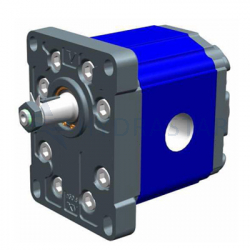Premature hydraulic pump failure can be caused by various factors, some of which are unique to certain applications. To help prevent pump failures and ensure efficient system operation, it is essential to understand the root causes of premature failure. Read on as we explore some of the most common causes. We’ll also offer some tips on how you can avoid these problems to prolong the life of your hydraulic pump and prevent unscheduled downtime, minimise repair costs and maximise service life.
1) Fluid Contamination
When water, dirt or debris enters the system and makes its way into the pump, it can cause several problems, including higher than normal operating temperatures or sudden pump failure. If left unchecked over an extended period, permanent damage to internal pump components can occur. Therefore, it remains crucial to undertake preventative maintenance at scheduled intervals to ensure that pumps are not exposed to contamination for long periods.
2) Temperature Problems
When it comes to operating conditions, lower temperatures are preferable because they offer extended fluid life and reduced wear on components. Sudden temperature increases can damage pump components, affect fluid viscosity, and cause increased friction between moving parts. Therefore, it’s crucial to invest in quality parts to ensure maximum pump life.
3) Abnormal Vibration
Vibration is caused by unbalanced rotating components or misalignment of pumps and motors. Excessive vibration can cause increased wear on internal components, lead to pump failure and even pose a safety hazard for personnel in close contact. Installing quality prime movers and avoiding resonance between the prime mover assembly and other equipment within the system can help prevent this problem.
4) Fluid Leaks
Fluid leaks are not only messy but also reduce system efficiency by allowing vital hydraulic fluid to escape through damaged hoses or fittings. Furthermore, fluid leaks increase downtime by requiring pump replacement or overhaul. To avoid this, always check your system for proper hose connections and use quality hoses to help prevent leakage.
5) Cavitation
Cavitation is the rapid formation and collapse of vapour bubbles in a moving fluid or on stationary surfaces. These bubbles can break away from the fluid flow and cause damage due to turbulence, high vibrations, and erosive wear. To manage this issue, use properly sized hose and fittings. In addition, you can establish the most direct routing from the pump to the different reservoirs.
Find Out More – Speak To Our Team Of Hydraulic Experts
Regular preventative maintenance and quality parts can go a long way in avoiding unscheduled downtime and maximising service life. If you think your hydraulic pump is failing prematurely, consider the above potential causes before rushing to replace it. You can also speak to our hydraulic systems expert team to discuss possible solutions.



